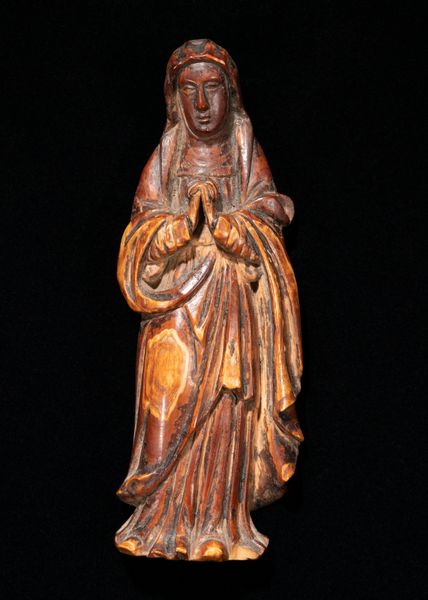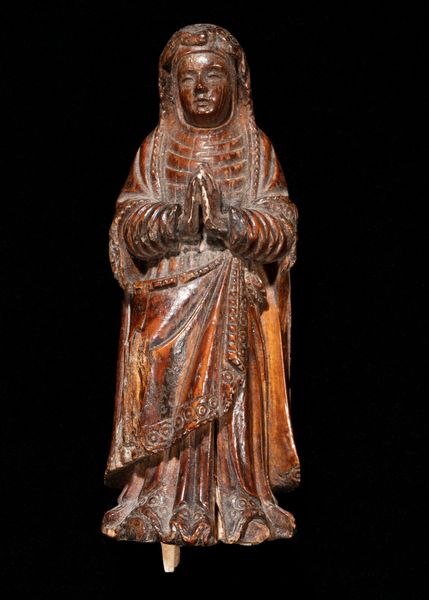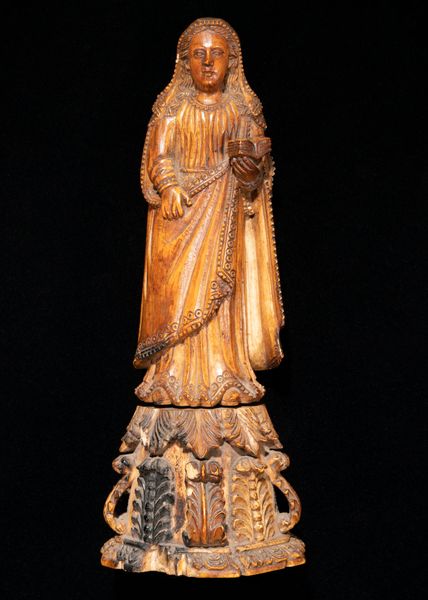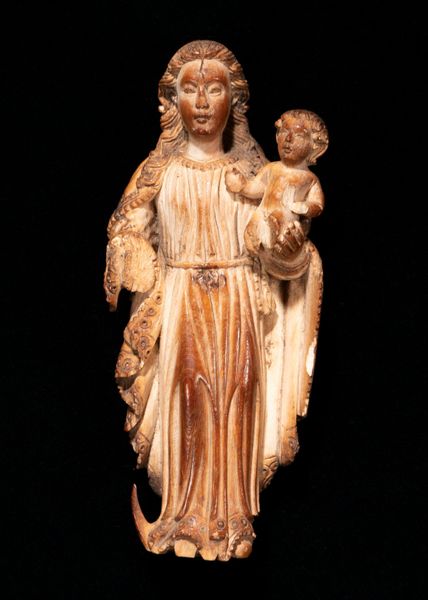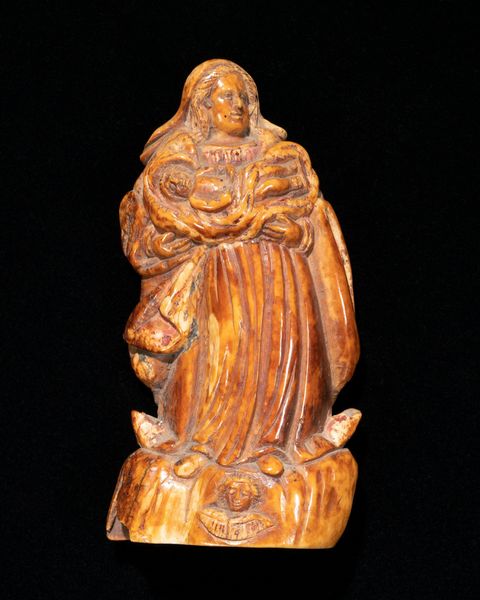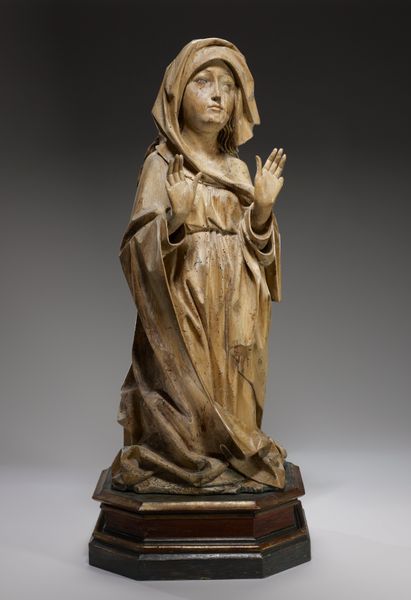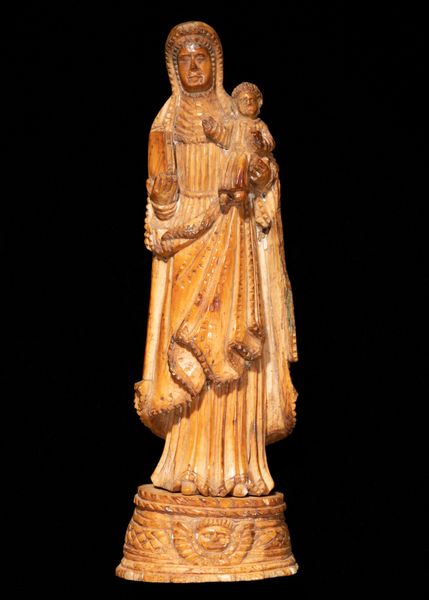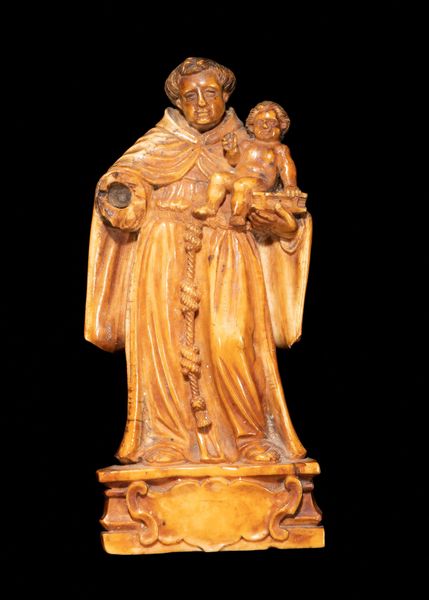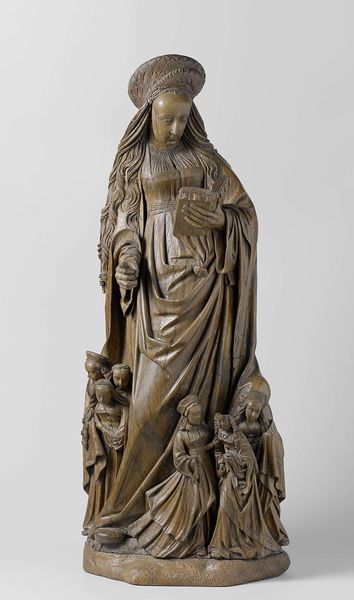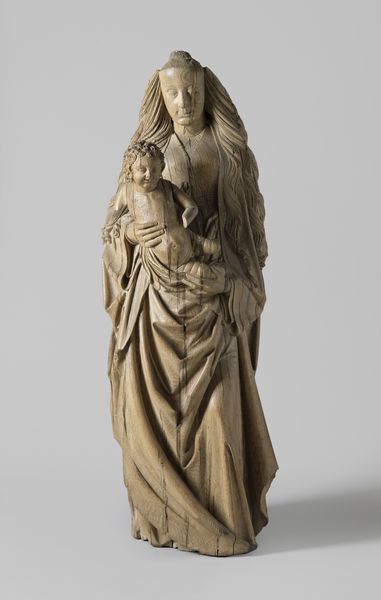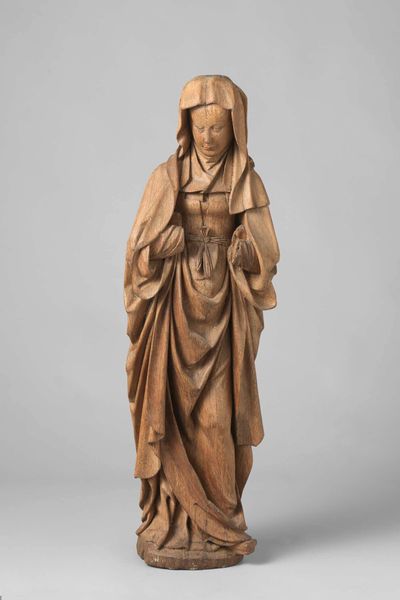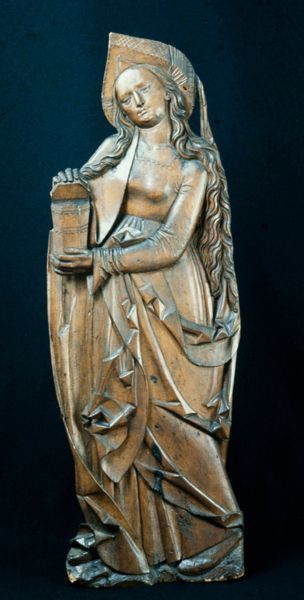
sculpture, ivory
#
portrait
#
baroque
#
sculpture
#
figuration
#
sculpture
#
ivory
Dimensions: 6 × 2 1/4 × 1 in. (15.24 × 5.72 × 2.54 cm)
Copyright: Public Domain
Curator: Take a look at this piece. It’s titled “Figure of a Saint,” an ivory sculpture crafted sometime during the 17th or 18th century. Currently, it resides here at the Minneapolis Institute of Art. What are your initial thoughts? Editor: Immediate, earthy elegance. I love how the ivory warms a space, especially contrasted against that dark background. There’s something incredibly comforting and authoritative about her stance, all that draped fabric – not a lot of movement, though; is she supposed to look very proper, serious? Curator: That feeling you pick up on, it's deliberate. As an iconographer, you probably know that in Baroque sculpture, posture and drapery were key to conveying emotion, and the saint’s calmness and stillness certainly reinforce the subject’s sense of grace and wisdom. Editor: Absolutely. The way the robes cascade – very stylized. I see the classical roots peeking through, but adapted for a more, shall we say, overtly pious message. Tell me about what she’s holding. A scroll? Curator: Yes, it appears to be a scroll. We can infer she is embodying the sacred word or perhaps is an apostle bringing holy pronouncements. But also note the hand raised in benediction; perhaps she's imparting that wisdom, blessing the world, even. It feels intimate because of the figure's diminutive scale; an object meant for personal contemplation perhaps? Editor: A tactile connection. I hadn’t thought of that. And of course, ivory itself—what was the choice there? Is it meant to imply purity, the incorruptibility of holiness? It must have been a precious material then. Curator: Exactly. Ivory carries not only the cost and inherent value but a long-standing cultural weight linking it to virtue, luxury, and a certain perceived immortality. Consider where ivory comes from—it connects the piece, too, to ideas of exoticism, to faraway lands, to the concept of 'bringing light' to the unknown through Christianity. Editor: Hmmm, fascinating. I keep coming back to her gaze, that gentle upward tilt. A very persuasive mix of serenity and power. And considering its Baroque-era origins, I think one can almost discern what was intended to invoke with the work; this potent blending of sacred authority with humane benevolence. It leaves an imprint. Curator: Yes, a potent combination captured in a humble, beautifully worked material. What a journey, compressed into the curve of carved ivory!
Comments
minneapolisinstituteofart almost 2 years ago
⋮
The province of Goa in western India was under Portuguese control from 1512–1961, forming a nexus in trading routes that circumnavigated the earth. Goan craftsman were renowned for their supple modeling of ivory (likely exported from Mozambique) into Christian icons, which feed the appetite for luxury products in Europe, as well as furthered evangelical missions throughout Asia and the Americas. Within the genre of Indo-Portuguese ivories, popular subjects include ‘Christ as the Good Shepard’ (the image of Christ as child would have related to similar bronze statuettes of the God Krishna) and the ‘Virgin of the Immaculate Conception,’ which shows Mary atop a crescent moon, both of which remain ever-present icons in South Asia’s diverse religious landscape.
Join the conversation
Join millions of artists and users on Artera today and experience the ultimate creative platform.
